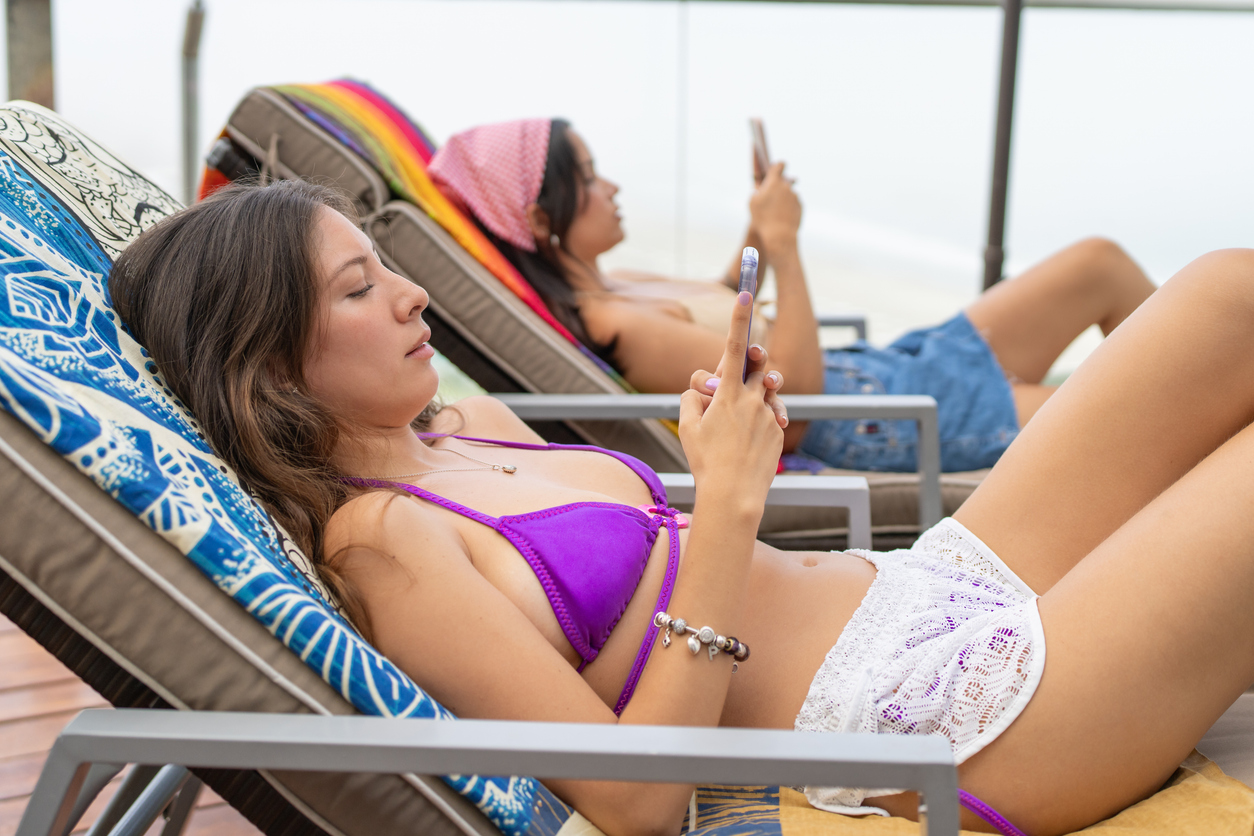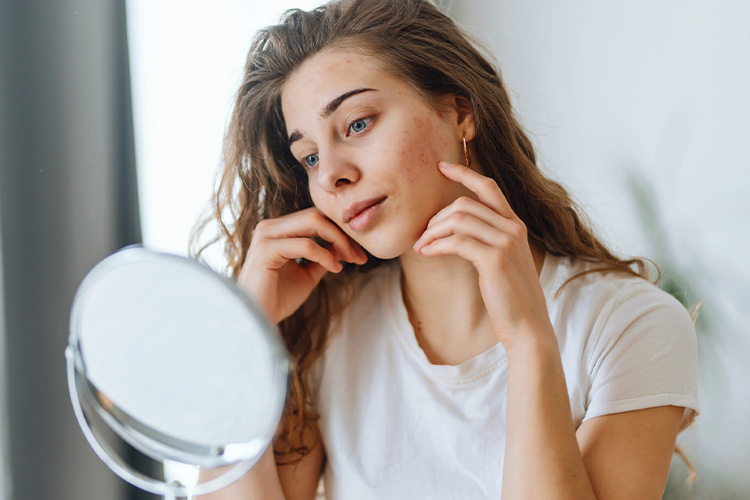A current trend among those searching for the perfect tan involves following the UV Index as a way to find the best times to maximize sun exposure. They do this by determining the strength of the sun’s ultraviolet (UV) radiation at a specific time and place.
The higher the UV Index measurement, the higher the risk of UV exposure. You may think that sunbathing when UV numbers are high means you’re optimizing your tan. However, the experts at Olansky Dermatology & Aesthetics say that’s the best way to get burned, in more ways than one.
UV Index Levels Explained
The UV Index, developed by the Environmental Protection Agency (EPA) and the National Weather Service (NWS), describes the likelihood of exposure to UV rays throughout the day. Here’s how the UV Index works. It uses a 0 to 10+ scale. The numbers 0 to 2 mean minimal exposure, followed by 3 to 4, which is low. Numbers 5 to 6 rank as moderate, while 7 to 9 means high. The Index is considered very high when it reaches 10, and 11 or higher is considered extreme. So, what is a safe UV Index for tanning? The World Health Organization recommends sun protection when the UV Index is 3 and higher.
How UV Radiation Damages Skin
It’s a fact that too much exposure to UV radiation damages the skin. According to the American Skin Association, when the skin burns, the UV rays can cause additional harm by negatively affecting the genetic material of the epidermis, the outer layer of the skin. When the DNA of the pigment cells is damaged, it can contribute to the development of melanoma and other skin cancers. Additionally, overexposure to UV rays can cause premature aging, cataracts, and actinic keratosis. The latter is a precancerous skin condition featuring rough, scaly patches or bumps.
Skin Cancer Risk
Not only is a high UV Index bad for tanning, but it can also be life-threatening. UV radiation causes most skin cancer cases, and overexposure to the sun increases that risk. It’s even riskier for those with a weakened immune system, a personal or family history of skin cancer, and if they have large or many moles on their skin.
According to the American Cancer Society, both basal cell and squamous cell cancers–the most common types of skin cancer–most often form on sun-exposed parts of the body and are usually related to lifetime sun exposure. Melanoma, the deadliest form of skin cancer, is also related to sun exposure. Behaviors such as spending time in the sun for recreation, exposing unprotected skin to the sun, and experiencing repeated sunburns amp up the risk of skin cancer.
Sun Safety
Instead of using the UV Index as a way to amp up a tan, use it to help guide your sun safety strategy. UV rays are typically strongest from 9 a.m. to 3 p.m. When the UV Index is 3 or higher, the U.S. Centers for Disease Control and Prevention (CDC) suggests wearing clothing that covers your arms and legs. A hat with a wide brim helps shade the head, face, neck, and ears. Wrap-around sunglasses assist in blocking UV rays. Wear a broad-spectrum sunscreen with a sun protection factor (SPF) of 15 or higher. Make sure to avoid indoor tanning. Our dermatologists also strongly advise against using tanning oils (and general oils) in any capacity because they amplify UV’s effects, have low or non-existent SPF, and interfere with the effectiveness of sunscreen.
Skin Cancer Treatment
When caught early, skin cancer can typically be treated successfully. Skin cancer treatments can include surgery, radiation therapy, chemotherapy, immunotherapy, and other treatments. Olansky Dermatology & Aesthetics offers several skin cancer treatment options, including Mohs micrographic surgery, an advanced procedure and currently the most successful skin cancer treatment available for treating basal cell and squamous cell skin cancers. Its five-year cure rates for new cancers are more than 99%, and it has a 95% cure rate for recurring cancers.
Concerned About Possible Skin Cancer? Make an Appointment with Olansky Dermatology & Aesthetics
When it comes to diagnosing and treating skin cancer, time is of the essence. Allow the board-certified dermatologists at Olansky Dermatology & Aesthetics the privilege to perform a thorough skin cancer screening. If needed, our experts will guide you toward the path of recovery by helping you decide the best course of action and removal options. Our level of professionalism and skill combined with patient-centered compassion are here for you as you navigate a skin cancer concern.
To discuss any skin cancer concerns you may have, schedule an appointment online.


